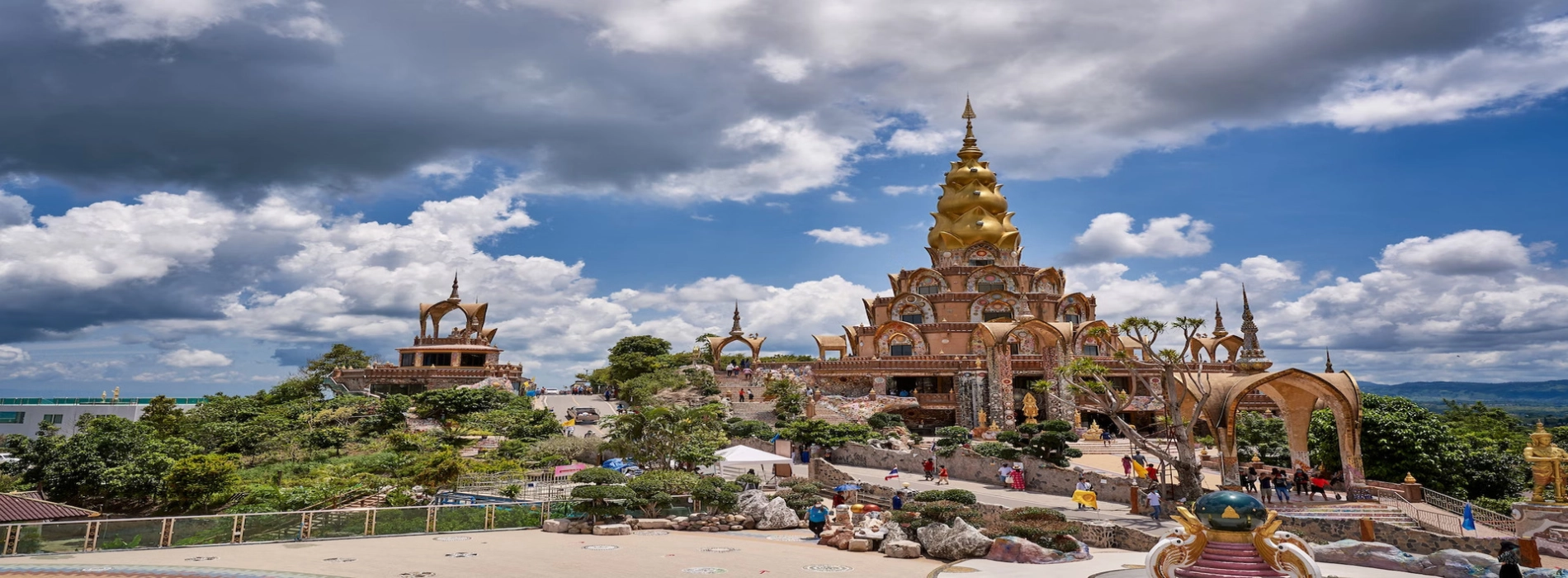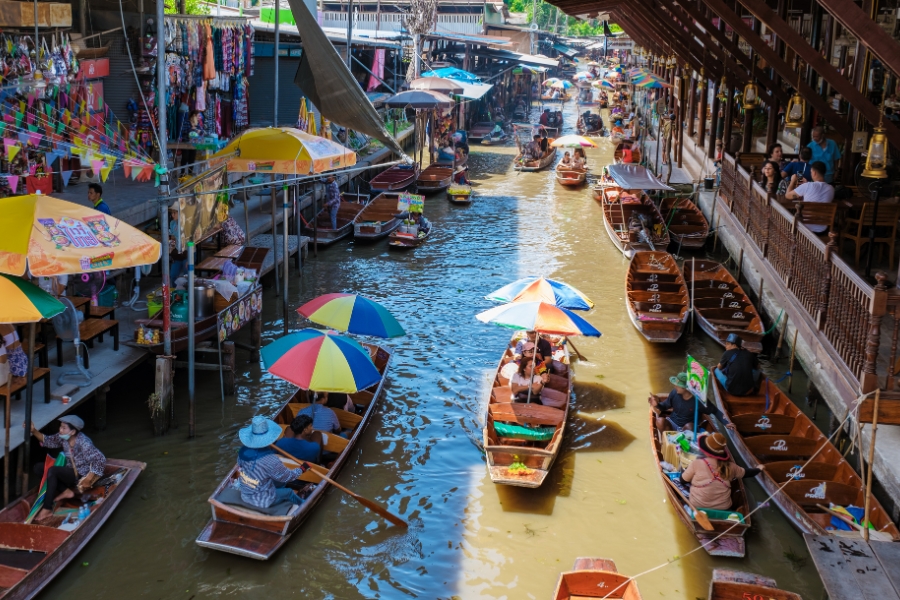Ratchaburi

Ratchaburi, a province in western Thailand, boasts a vibrant history that stretches back to the Dvaravati period. This historical richness is evident in the various temples, ruins, and cultural sites that dot the landscape. The region is located on the banks of the Mae Klong River 80 kilometres west of Bangkok and Ratchaburi features outstanding natural beauty and some opportunities to learn about Thai culture. It is approximately 2-3 hours from bustling Bangkok, and invites travellers to explore a realm where ancient traditions meet modern vibrancy. Ratchaburi's historical significance traces back to the Dvaravati period, evident in the remnants of temples and ancient towns that dot the landscape. Beyond historical marvels, Ratchaburi invites gastronomic adventures with its delectable local cuisine. With its blend of history, natural beauty, and warm hospitality, Ratchaburi emerges as a destination where time-honoured traditions meet the present, creating an unforgettable tapestry of Thai allure. Let's explore with Asia King Travel!

Floating boat in Ratchaburi, Damnoen Saduak Floating Market
Ratchaburi remains an important commercial centre, however. Archaeological discoveries show that the area was already settled in the Bronze Age, and the town itself is known to have existed for at least two thousand years. In the 13th century, King Ram Khamhaeng seized Ratchaburi and incorporated it into the Sukhothai Kingdom. Later it was an important trade centre in the Ayutthaya Kingdom. In 1768 the Burmese (who had recently destroyed Ayutthaya) were thrown out of Ratchaburi by King Taksin, and the town became part of Siam. In 2000, a splinter group of Karen activists from Burma, known as God's Army, briefly took the Ratchaburi hospital staff and patients hostage, before the siege was relieved by the Thai army.
General weather in Ratchaburi
Ratchaburi experiences a tropical climate with three distinct seasons. The hot season prevails from March to May, with temperatures between 30°C and 35°C. The rainy season spans from June to October, with heavy downpours and lush greenery. The cool season, extending from November to February is considered the most pleasant time to visit, offering temperatures ranging from 25°C to 30°C and lower humidity.
Best season to go
The cool season is widely regarded as the best time to explore Ratchaburi. During these months, the weather is mild, and outdoor activities become more enjoyable. Travelers seeking to avoid the heat and excessive rainfall should plan their visit between November and February
Ratchaburi is conveniently accessible from Bangkok, approximately a 2-3 hour drive away. Travellers can opt for buses or trains departing from Bangkok to reach Ratchaburi.

Na Satta Centre, a peaceful place, Thai's culture
Within Ratchaburi, transportation options include taxis, tuk-tuks, and motorbike rentals. These modes of transport provide flexibility for exploring the local attractions and markets at your own pace
To explore neighbouring provinces, travellers can utilize the well-connected bus and train services. Alternatively, hiring a car or joining guided tours offers a convenient way to venture beyond Ratchaburi and discover the cultural richness of surrounding areas. Nearby provinces worth exploring include Kanchanaburi, with its historical significance, and Suphan Buri, known for its ancient temples and vibrant festivals.
Read more at: Top 10 must-try dishes in Thailand.